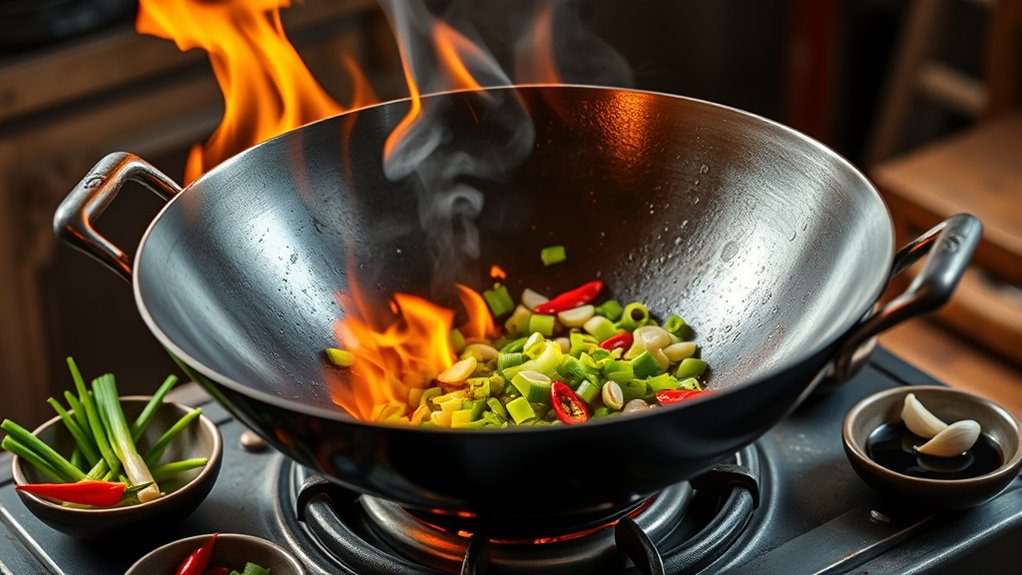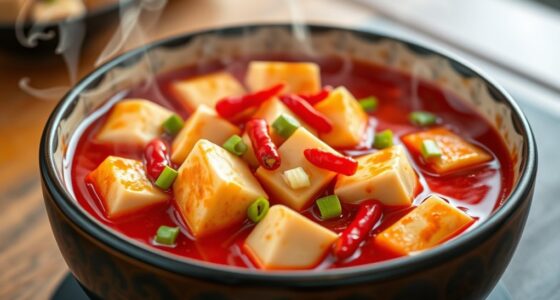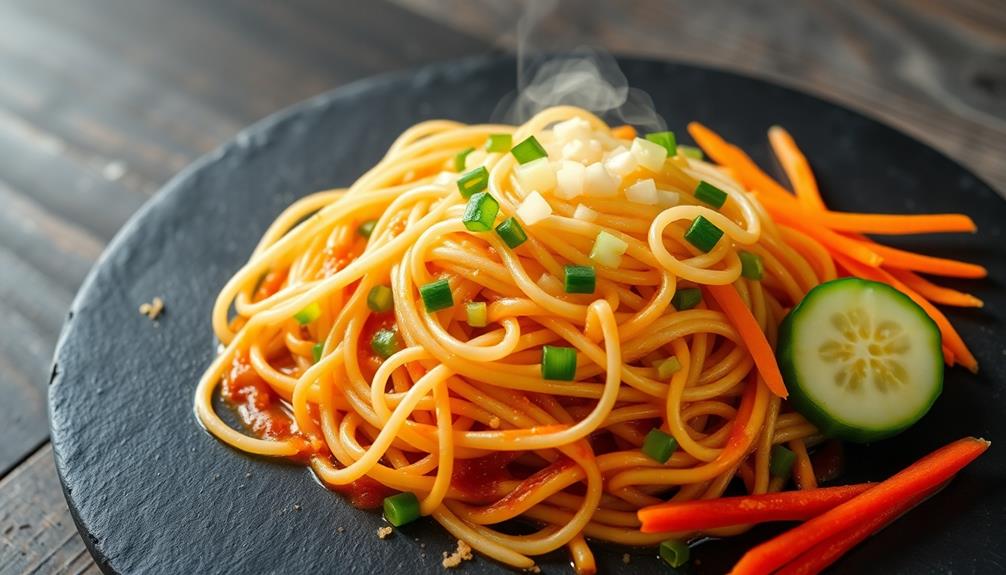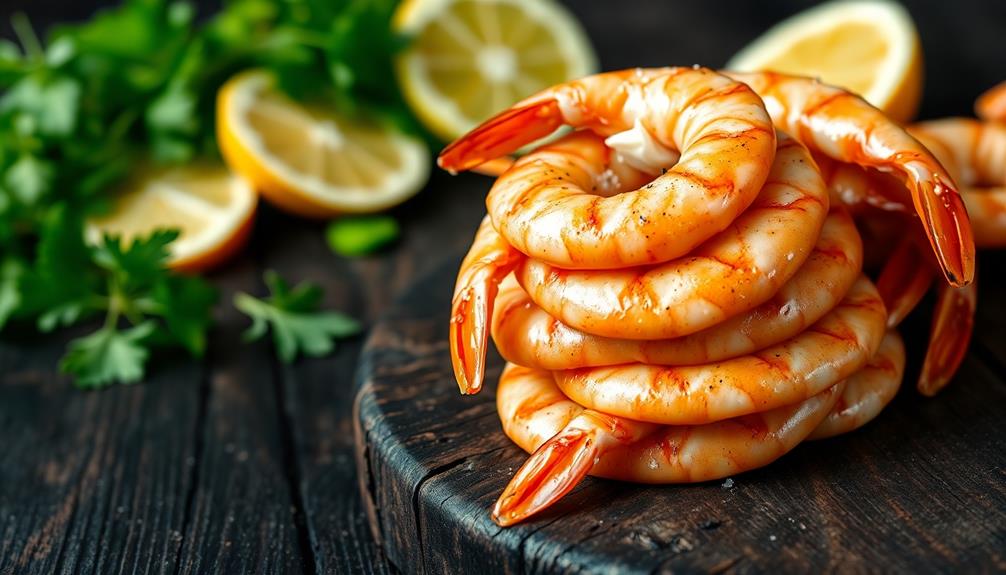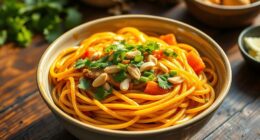To open authentic Chinese home cooking with just one wok, focus on seven key techniques: marinate ingredients to build flavor, prep everything evenly, control your temperature carefully, choose the right cooking methods, and master timing. Properly marinate and prep ingredients guarantee better flavor absorption, while precise heat creates smoky wok hei. Timing each step ensures perfect textures. Mastering these techniques will transform your cooking—keep going to discover how to perfect each step for delicious results.
Key Takeaways
- Master temperature control to achieve wok hei and cook ingredients quickly without overcooking.
- Use proper ingredient preparation, including slicing and marinating, to maximize flavor absorption and texture.
- Employ techniques like stir-frying, steaming, braising, and blanching to suit different dishes and ingredient types.
- Maintain a clean wok and high heat for consistent results and to develop the authentic smoky aroma.
- Adjust timing and method based on ingredient size and texture to ensure perfectly cooked, flavorful Chinese dishes.
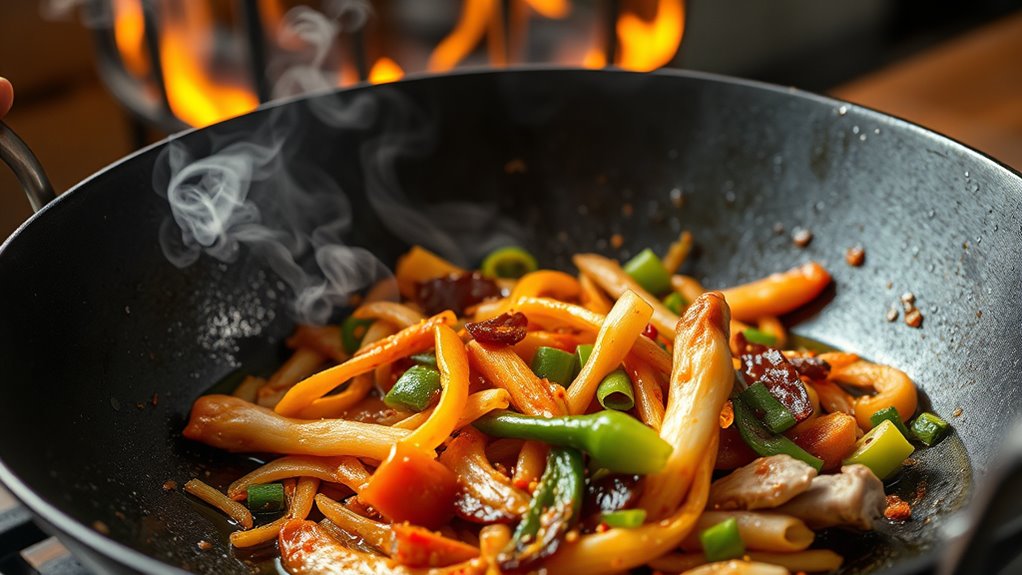
Chinese cooking techniques are the foundation of its rich and diverse culinary traditions. Mastering these techniques allows you to bring authentic flavors into your home kitchen. One of the essential skills is understanding marinade methods, which infuse ingredients with depth and complexity. You’ll want to start with the basics: selecting the right ingredients for your marinade, such as soy sauce, rice wine, ginger, garlic, and sesame oil. Marinating isn’t just about flavor; it also tenderizes meat and vegetables, making every bite more satisfying. You can vary your marinade methods depending on the dish — quick marinades work for stir-fries, while longer marinating times are perfect for braised dishes or grilled skewers. Remember, proper ingredient prep complements your marinade efforts. Slicing meat thinly against the grain, chopping vegetables uniformly, and removing excess moisture help your ingredients absorb flavors better. For example, patting meat dry before marinating ensures the marinade sticks well and prevents splattering during cooking. When preparing ingredients, pay attention to the texture and size, as these factors influence cooking times and final taste. Precise ingredient prep also includes blanching or parboiling vegetables when necessary, which softens fibers and enhances the overall dish. These prep steps are vital because they set the stage for your cooking techniques to shine. Additionally, understanding food safety practices during preparation ensures healthy and hygienic cooking. Incorporating proper ingredient prep techniques can also help prevent overcooking or undercooking, ensuring optimal results. Proper temperature control during cooking is equally important to achieve the desired texture and flavor. Furthermore, choosing the right cooking methods based on ingredient types can elevate your dishes to authentic levels.
Once your ingredients are prepared, you’ll find that your ability to control heat and timing during stir-frying, steaming, or braising makes all the difference. For stir-frying, high heat and quick tossing lock in flavors and give the dish a desirable wok hei — that signature smoky aroma. Steaming requires gentle, even heat, preserving the ingredients’ natural sweetness and nutrients. Braising involves slow, consistent heat to break down tougher cuts of meat or dense vegetables, resulting in tender bites bursting with flavor. Each technique depends on your prep work and marinade methods to maximize taste and texture. Each step in the process influences the final outcome, highlighting the importance of technique and timing. As you become more familiar with these core techniques, you’ll develop a rhythm that allows you to adapt recipes on the fly, adjusting marinade times or ingredient sizes to suit your preferences. The key is understanding how each step interacts: how marinade methods enhance flavor, how ingredient prep influences texture, and how precise timing and heat yield the perfect dish. With practice, you’ll find yourself effortlessly balancing these elements, creating Chinese home-cooked meals that are both authentic and deeply satisfying. It’s all about mastering the fundamentals, so you can confidently experiment and make each dish uniquely yours.
Frequently Asked Questions
What Is the History Behind the Wok’s Design?
You might wonder about the wok’s design, which evolved over centuries through cultural influences and practical needs. Its round bottom maximizes heat distribution, ideal for stir-frying, while the handle design allows easy tossing. The wok’s shape and materials reflect its history, blending Chinese innovation with influences from neighboring cultures. This evolution makes it a versatile, essential tool in Chinese home cooking, adaptable to various cuisines and cooking styles.
How Do Different Oils Affect Stir-Frying Outcomes?
Like a painter choosing brushes, you select oils to influence your stir-fry. Different oils bring unique flavors and smoke points, affecting frying temperature and taste. For example, sesame oil adds a nutty aroma but isn’t ideal for high heat, while vegetable oil handles intense frying without overpowering flavors. Using the right oil enhances your dish’s flavor and texture, making your stir-fry truly stand out.
Can Non-Stick Woks Be Used for Authentic Chinese Dishes?
You can use a non-stick wok for authentic Chinese dishes, but be aware of the non-stick limitations. These woks often don’t develop the same seasoning and flavor as traditional woks. For authentic wok usage, it’s better to opt for a carbon steel or cast iron wok, which heats evenly and allows you to achieve the high temperatures needed for stir-frying. Non-stick woks are convenient but may fall short for truly authentic Chinese cooking techniques.
What Are Common Mistakes to Avoid in Wok Cooking?
When it comes to wok cooking, you should watch out for common pitfalls and technique errors. Avoid overcrowding the wok, which can lead to steaming instead of stir-frying. Make sure your wok is properly heated before adding ingredients, and don’t forget to keep everything moving to prevent sticking. Also, use the right oil and cut ingredients uniformly for even cooking. These tips help you achieve authentic, flavorful results.
How Do I Properly Season and Maintain My Wok?
Did you know that a well-seasoned wok can last for decades? To properly season your wok, start with the seasoning basics: heat it, apply oil, and cook until it darkens. For wok maintenance, clean it gently without soap, dry thoroughly, and apply a thin layer of oil after each use. Regular upkeep prevents rust and keeps your wok non-stick, ensuring it performs perfectly for years to come.
Conclusion
Just like the ancient masters who crafted timeless dishes, mastering these seven techniques transforms your wok into a vessel of culinary magic. Think of it as wielding a modern forge, where each stir and sizzle shapes your own masterpiece. With practice, you’ll discover the secrets of Chinese home cooking, turning everyday ingredients into a symphony of flavors. Embrace the journey, and soon you’ll be creating dishes that echo the wisdom of centuries past in every bite.
